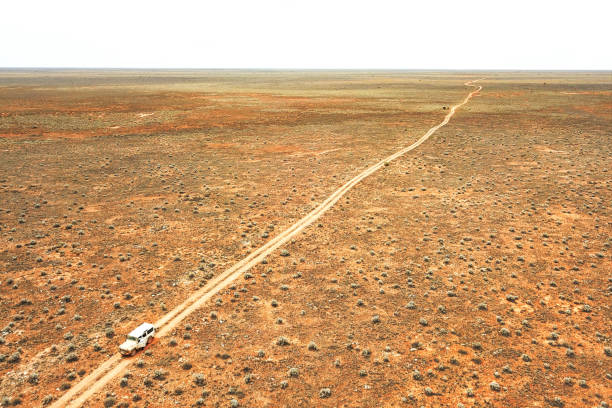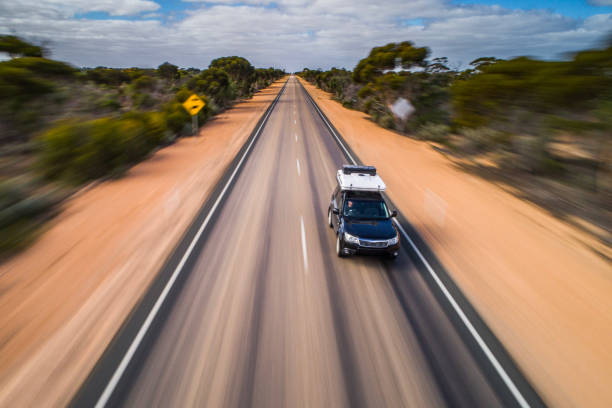Driving across the Nullarbor Plain is a quintessential Australian adventure. The safety of such an epic journey largely depends on preparation and awareness. While remote and sometimes daunting, with the right vehicle, sufficient supplies, and adherence to safety advice, the trip can be both safe and incredibly rewarding. The following article discusses various aspects of safety to consider when planning to drive across this vast landscape.
Understanding the Nullarbor Terrain

To safely navigate the Nullarbor, it’s essential to understand its terrain. The Nullarbor Plain, stretching approximately 1,100 kilometers between Norseman in Western Australia and Ceduna in South Australia, is the world’s largest single piece of limestone, and its name means “no trees” in Latin. Despite this, it’s not entirely devoid of flora; scrub and occasional trees dot the landscape. It’s a flat, arid region, with long stretches of straight road known as the “90 Mile Straight” — Australia’s longest straight road. Thus, drivers need to prepare for long, uninterrupted drives that can be unexpectedly hypnotic.
- Plan for extensive straight roads that test your concentration.
- Prepare for a flat, treeless expanse, often under harsh sunlight.
- Expect limited immediate access to services and amenities.
Vehicle Preparation and Supplies
Before embarking on a Nullarbor crossing, your vehicle must be in top condition. A thorough service should check your car’s engine, tires, brakes, and cooling system. Ensure your spare tire and jack are functional, and consider carrying additional spare tires if possible. In terms of supplies, here’s what you should have:
- Adequate water (at least 10 liters per person for emergency).
- Enough non-perishable food supplies.
- A first-aid kit and any personal medications.
- An emergency kit including flares, reflective signs, and a fire extinguisher.
- Reliable communication devices, like a satellite phone, as mobile service is limited.
- Up-to-date maps or GPS with the Nullarbor route clearly marked.
Transporting extra fuel is also advisable, as distances between petrol stations can be significant.
Weather Conditions and Wildlife Hazards
The weather on the Nullarbor can be extreme. Summer temperatures can soar into the 40s (Celsius), while winters, although milder, can be surprisingly chilly, especially at night. If you’re driving in summer, avoid the hottest part of the day and carry sun protection, such as hats, sunscreen, and long-sleeve shirts. During dusk and dawn, wildlife is most active, and animals like kangaroos and wombats can pose significant hazards if they cross the road unexpectedly. Always drive with caution during these times and be prepared to encounter wildlife.
- Be aware of extreme temperature fluctuations.
- Carry appropriate clothing and sun protection.
- Drive attentively at dawn and dusk to avoid collisions with wildlife.
Navigating Remoteness and Isolation
One of the unique challenges of crossing the Nullarbor is the remoteness and isolation. Roadhouses are sparse but provide critical services like fuel, food, and sometimes accommodation. It’s crucial to plan your stops and know the distances between services – never pass a fuel station without topping up. Let someone know your itinerary and expected arrival times. In case of emergency, having a planned check-in schedule can be lifesaving. Remain on the main route unless you’re experienced in off-road driving and navigation. Most importantly, don’t underestimate the psychological impact of isolation – stay mentally prepared and rested.
- Service stops are infrequent, so plan and provision accordingly.
- Keep others informed of your location and plans.
- Stick to known routes to mitigate the risks of getting lost.
Tips for a Safe Drive
Success on a Nullarbor drive is about meticulous planning and sensible driving habits. Here are some key tips to help ensure your journey is as safe as it is memorable:
- Maintain a reasonable and consistent speed to avoid fatigue and to manage fuel.
- Take regular breaks every two hours to stretch your legs and rest your eyes.
- Stay hydrated and avoid heavy meals to keep energy levels stable.
- Use caution at roadhouse and service areas; they can be busy with large vehicles.
- Keep an eye out for road signs that may indicate crossings for native wildlife or livestock.
- Have a plan for emergency situations and know how to use your safety gear.
Conclusion
Driving across the Nullarbor is definitely safe provided that you’re well-prepared, informed, and respectful of the journey’s demands. It’s an incredible experience, offering expansive views and unique sights, but it’s also a significant undertaking that requires diligence. Prepare your vehicle, carry the right supplies, and be mindful of the road’s challenges, including weather, wildlife, and isolation. With proper planning and a cautious approach, crossing the Nullarbor can be a safe and extraordinary Australian adventure that you’ll remember for a lifetime.

